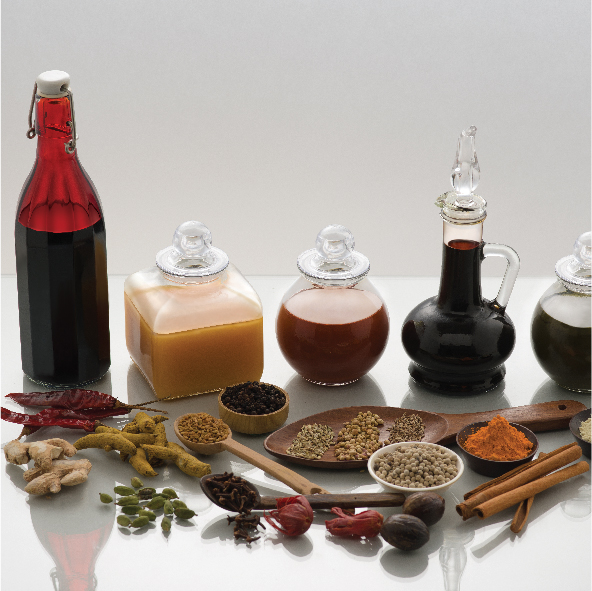Oleoresin
Description
Oleoresin is a natural extract obtained from various plant sources, typically spices and herbs. It is a concentrated mixture of essential oils and resinous compounds that give the oleoresin its characteristic flavor, aroma, and other properties. The process of obtaining oleoresin involves extracting the volatile essential oils and the non-volatile resinous components from the plant material.
Here are some key points about oleoresin:
1. **Extraction Process**: The extraction of oleoresin is usually carried out using a solvent-based method or through steam distillation. In the solvent-based method, a suitable solvent is used to dissolve the essential oils and resinous components from the plant material. The solvent is then removed, leaving behind the concentrated oleoresin. Steam distillation, on the other hand, involves passing steam through the plant material, which vaporizes the essential oils. The resulting steam containing essential oil is then condensed, and the essential oil is separated from the water, resulting in the oleoresin.
2. **Constituents**: Oleoresins are composed of a mixture of essential oils, which are volatile aromatic compounds responsible for the flavor and aroma of the plant, and resinous components, which are non-volatile and contribute to the color and texture of the oleoresin. The exact composition of oleoresin varies depending on the plant source.
3. **Uses**: Oleoresins are widely used in the food industry as natural flavoring agents and food additives. They add specific flavors and aromas to various food products such as sauces, marinades, seasonings, and processed meats. Oleoresins are preferred over essential oils in some applications because they are more stable and less susceptible to degradation.
4. **Advantages**: Oleoresins have several advantages over using whole spices or essential oils. They offer a more consistent and standardized flavor profile, as the concentration of essential oils can be controlled during the extraction process. Additionally, the use of oleoresins eliminates the need to handle and store large quantities of bulky plant material, making them more convenient for industrial-scale production.
5. **Examples**: Some common examples of oleoresins include paprika oleoresin, black pepper oleoresin, ginger oleoresin, and capsicum oleoresin (from chili peppers). Each of these oleoresins contains the characteristic flavors and colors of their respective spice or herb.
6. **Pharmaceutical and Cosmetic Uses**: Oleoresins are also used in the pharmaceutical and cosmetic industries for their medicinal and aromatic properties. They may be included in ointments, lotions, and perfumes, depending on the specific properties of the oleoresin.
It’s important to note that oleoresins are potent and highly concentrated extracts. Therefore, they should be used in appropriate quantities to achieve the desired flavor or aroma without overpowering the product. Additionally, some people may be sensitive or allergic to certain oleoresins, so caution should be exercised when using them in products meant for consumption or topical application.


Reviews
There are no reviews yet.